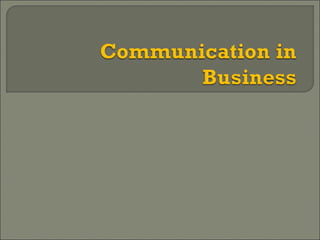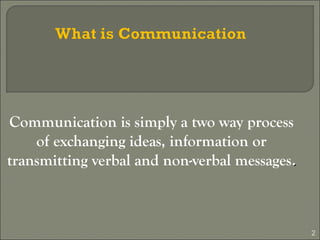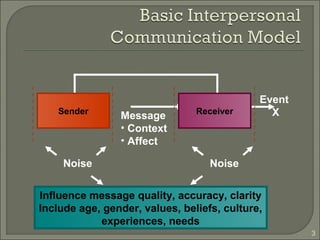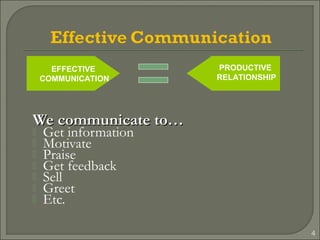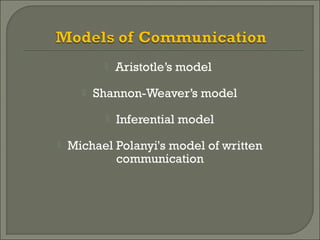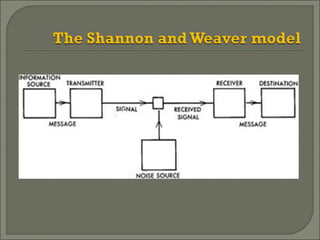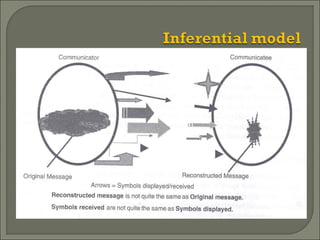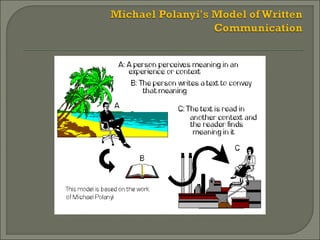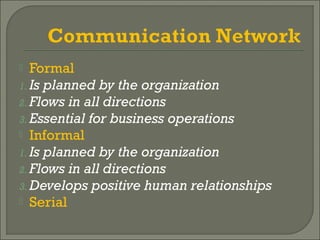Module 1 Introduction
- 2. Communication is simply a two way process of exchanging ideas, information or transmitting verbal and non-verbal messages.. 2
- 3. 3 Event XMessage • Context • Affect Noise / / / / / / / / / / / / / / / / / / / / / / / / / / / / / / / / / / / / Noise Influence message quality, accuracy, clarity Include age, gender, values, beliefs, culture, experiences, needs Influence message quality, accuracy, clarity Include age, gender, values, beliefs, culture, experiences, needs ReceiverReceiverSenderSender
- 4. We communicate to…We communicate to…  Get information  Motivate  Praise  Get feedback  Sell  Greet  Etc. 4 EFFECTIVE COMMUNICATION PRODUCTIVE RELATIONSHIP
- 5.  Aristotle’s model  Shannon-Weaver’s model  Inferential model  Michael Polanyi's model of written communication
- 6. ď‚ž the speaker ď‚ž the speech ď‚ž the audience The person at the end of the communication process holds the key to whether or not communication takes place.
- 10. 10 ď‚ž We communicate only when we want to communicate. ď‚ž Words mean the same to both speaker and listener. ď‚ž Communication is a one way street between the speaker and the listener. ď‚ž The message we communicate is the message that the listener will receive.
- 11. EFFECTIVE COMMUNICATIO N Quicker Problem Solving Stronger Decision Making Steadier Work Flow Improved Stakeholder response Stronger Business Relationship Clear Promotional Material Increased Productivity
- 12. ď‚ž Internal-Operational ď‚ž External Operational ď‚ž Informal
- 13. ď‚ž Formal 1. Is planned by the organization 2. Flows in all directions 3. Essential for business operations ď‚ž Informal 1. Is planned by the organization 2. Flows in all directions 3. Develops positive human relationships ď‚ž Serial
- 14. ď‚ž Upward ď‚ž Downward ď‚ž Horizontal ď‚ž Diagonal
- 15. ď‚ž Receiver Understanding ď‚ž Receiver Response ď‚ž Favorable Relationship ď‚ž Organizational Goodwill
- 16. ď‚ž Perceptual and Language Differences ď‚ž Restrictive Environments ď‚ž Distractions ď‚ž Perceptive Tactics ď‚ž Information Overload ď‚ž Ineffective Listening Skills ď‚ž Receiver's Capability
- 17. ď‚ž Adopt an Audience-Centered approach ď‚ž Foster an open communication climate ď‚ž Commit to ethical communication ď‚ž Create Lean and Efficient Messages

